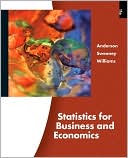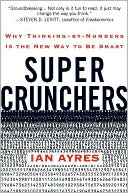Interest Rate Modeling: Theory and Practice
Containing many results that are new or exist only in recent research articles, Interest Rate Modeling: Theory and Practice portrays the theory of interest rate modeling as a three-dimensional object of finance, mathematics, and computation. It introduces all models with financial-economical justifications, develops options along the martingale approach, and handles option evaluations with precise numerical methods.\ The text begins with the mathematical foundations, including Ito’s calculus...
Search in google:
Containing many results that are new or exist only in recent research articles, Interest Rate Modeling: Theory and Practice portrays the theory of interest rate modeling as a three-dimensional object of finance, mathematics, and computation. It introduces all models with financial-economical justifications, develops options along the martingale approach, and handles option evaluations with precise numerical methods.The text begins with the mathematical foundations, including Ito’s calculus and the martingale representation theorem. It then introduces bonds and bond yields, followed by the Heath—Jarrow—Morton (HJM) model, which is the framework for no-arbitrage pricing models. The next chapter focuses on when the HJM model implies a Markovian short-rate model and discusses the construction and calibration of short-rate lattice models. In the chapter on the LIBOR market model, the author presents the simplest yet most robust formula for swaption pricing in the literature. He goes on to address model calibration, an important aspect of model applications in the markets; industrial issues; and the class of affine term structure models for interest rates.Taking a top-down approach, Interest Rate Modeling provides readers with a clear picture of this important subject by not overwhelming them with too many specific models. The text captures the interdisciplinary nature of the field and shows readers what it takes to be a competent quant in today’s market.This book can be adopted for instructional use. For this purpose, a solutions manual is available for qualifying instructors.
Preface xiiiAcknowledgments xviiAuthor xixChapter 1 The Basics of Stochastic Calculus 11.1 Brownian Motion 21.1.1 Simple Random Walks 21.1.2 Brownian Motion 41.1.3 Adaptive and Non-Adaptive Functions 61.2 Stochastic Integrals 81.2.1 Evaluation of Stochastic Integrals 111.3 Stochastic Differentials and Ito's Lemma 131.4 Multi-Factor Extensions 181.4.1 Multi-Factor Ito's Process 191.4.2 Ito's Lemma 201.4.3 Correlated Brownian Motions 201.4.4 The Multi-Factor Lognormal Model 211.5 Martingales 22Chapter 2 The Martingale Representation Theorem 272.1 Changing Measures With Binomial Models 282.1.1 A Motivating Example 282.1.2 Binomial Trees and Path Probabilities 302.2 Change of Measures Under Brownian Filtration 342.2.1 The Radon-Nikodym Derivative of a Brownian Path 342.2.2 The CMG Theorem 372.3 The Martingale Representation Theorem 382.4 A Complete Market with Two Securities 392.5 Replicating And Pricing of Contingent Claims 402.6 Multi-Factor Extensions 432.7 A Complete Market With Multiple Securities 442.7.1 Existence of a Martingale Measure 442.7.2 Pricing Contingent Claims 472.8 The Black-Scholes Formula 482.9 Notes 51Chapter 3 Interest Rates and Bonds 593.1 Interest Rates And Fixed-Income Instruments 603.1.1 Short Rate and Money Market Accounts 603.1.2 Term Rates and Certificates of Deposit 613.1.3 Bonds and Bond Markets 623.1.4 Quotation and Interest Accrual 643.2 Yields 663.2.1 Yield to Maturity 663.2.2 Par Bonds, Par Yields, and the Par Yield Curve 693.2.3 Yield Curves for U.S. Treasuries 693.3 Zero-Coupon Bonds And Zero-Coupon Yields 703.3.1 Zero-CouponBonds 703.3.2 Bootstrapping the Zero-Coupon Yields 723.3.2.1 Future Value and Present Value 733.4 Forward Rates And Forward-Rate Agreements 733.5 Yield-Based Bond Risk Management 753.5.1 Duration and Convexity 753.5.2 Portfolio Risk Management 78Chapter 4 The Heath-Jarrow-Morton Model 814.1 Lognormal Model: The Starting Point 834.2 The HJM Model 864.3 Special Cases of the HJM Model 894.3.1 The Ho-Lee Model 904.3.2 The Hull-White (or Extended Vasicek) Model 914.4 Estimating The HJM Model From Yield Data 944.4.1 From a Yield Curve to a Forward-Rate Curve 944.4.2 Principal Component Analysis 994.5 A Case Study With A Two-Factor Model 1054.6 Monte Carlo Implementations 1074.7 Forward Prices 1104.8 Forward Measure 1134.9 Black's Formula For Call And Put Options 1164.9.1 Equity Options under the Hull-White Model 1184.9.2 Options on Coupon Bonds 1224.10 Numeraires and Changes of Measure 1254.11 Notes 127Chapter 5 Short-Rate Models and Lattice Implementation 1335.1 From Short-Rate Models To Forward-Rate Models 1345.2 General Markovian Models 1375.2.1 One-Factor Models 1445.2.2 Monte Carlo Simulations for Options Pricing 1465.3 Binomial Trees of Interest Rates 1475.3.1 A Binomial Tree for the Ho-Lee Model 1485.3.2 Arrow-Debreu Prices 1495.3.3 A Calibrated Tree for the Ho-Lee Model 1525.4 A General Tree-Building Procedure 1565.4.1 A Truncated Tree for the Hull-White Model 1565.4.2 Trinomial Trees with Adaptive Time Steps 1625.4.3 The Black-Karasinski Model 163Chapter 6 The Libor Market Model 1676.1 Libor Market Instruments 1676.1.1 Libor Rates 1686.1.2 Forward-Rate Agreements 1696.1.3 Repurchasing Agreement 1716.1.4 Eurodollar Futures 1716.1.5 Floating-Rate Notes 1726.1.6 Swaps 1746.1.7 Caps 1776.1.8 Swaptions 1786.1.9 Bermudan Swaptions 1796.1.10 Libor Exotics 1796.2 The Libor Market Model 1826.3 Pricing of Caps And Floors 1876.4 Pricing of Swaptions 1886.5 Specifications of the Libor Market Model 1966.6 Monte Carlo Simulation Method 2006.6.1 The Log-Euler Scheme 2006.6.2 Calculation of the Greeks 2016.6.3 Early Exercise 202Chapter 7 Calibration of Libor Market Model 2117.1 Implied Cap And Caplet Volatilities 2127.2 Calibrating the Libor Market Model to Caps 2167.3 Calibration to Caps, Swaptions, And Input Correlations 2187.4 Calibration Methodologies 2247.4.1 Rank-Reduction Algorithm 2247.4.2 The Eigenvalue Problem for Calibrating to Input Prices 2377.5 Sensitivity With Respect to the Input Prices 2507.6 Notes 253Chapter 8 Volatility and Correlation Adjustments 2558.1 Adjustment Due to Correlations 2568.1.1 Futures Price versus Forward Price 2568.1.2 Convexity Adjustment for Libor Rates 2618.1.3 Convexity Adjustment under the Ho-Lee Model 2638.1.4 An Example of Arbitrage 2648.2 Adjustment Due To Convexity 2668.2.1 Payment in Arrears versus Payment in Advance 2668.2.2 Geometric Explanation for Convexity Adjustment 2688.2.3 General Theory of Convexity Adjustment 2698.2.4 Convexity Adjustment for CMS and CMT Swaps 2738.3 Timing Adjustment 2768.4 Quanto Derivatives 2788.5 Notes 284Chapter 9 Affine Term Structure Models 2879.1 An Exposition with One-Factor Models 2889.2 Analytical Solution Of Riccarti Equations 2979.3 Pricing Options on Coupon Bonds 3019.4 Distributional Properties of Square-Root Processes 3029.5 Multi-Factor Models 3039.5.1 Admissible ATSMs 3059.5.2 Three-Factor ATSMs 3069.6 Swaption Pricing Under ATSMs 3109.7 Notes 315References 319Index 327








